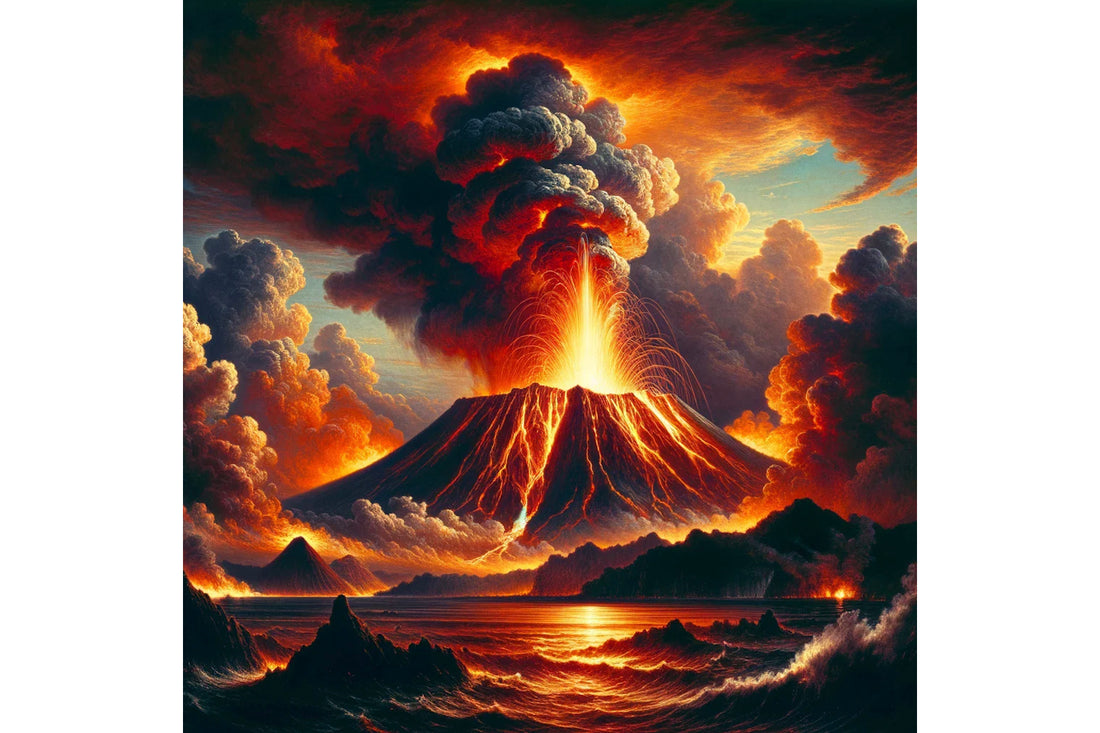The word sounds just like what it is … and what it did.
Krakatoa is a volcanic island situated in the Sunda Strait between the islands of Java and Sumatra in Indonesia. It is best known for the cataclysmic eruption that occurred on 27 August 1883, one of the most powerful volcanic events in recorded history.
The third and largest Krakatoa explosion occurred at 10:02am and has been reported as the loudest sound in history. It was heard 3,110 km (1,930 miles) away in Perth, Western Australia, and the Indian Ocean island of Rodrigues near Mauritius, 4,800 km (3,000 miles) away, where the blast was thought to have been cannon fire from a nearby ship. The energy released from the explosion has been estimated to be equal to about 200 megatonnes of TNT (840 petajoules), roughly four times as powerful as the Soviet “Tsar Bomba”, the most powerful thermonuclear weapon ever detonated. Concussive air waves from the eruption circled the globe several times and were still detectable on barographs five days later.
The eruption of Krakatoa resulted in the collapse of much of the island and the formation of a massive caldera. It triggered tsunamis that reached heights of up to 40 metres (130 feet) and caused widespread devastation along the coasts of nearby islands. The official death toll recorded by the Dutch authorities was 36,417.
The eruption also injected large quantities of ash and volcanic gases into the atmosphere, leading to significant climate effects, including vivid sunsets and temperature drops observed worldwide for several years afterward.
British artist William Ascroft made thousands of colour sketches of the red sunsets halfway around the world from Krakatoa in the years after the eruption, and, across the Atlantic, according to volcanologist Scott Rowland at the University of Hawaii, the ash caused "such vivid red sunsets that fire engines were called out in New York, Poughkeepsie and New Haven to quench the apparent conflagration".
In 2004, an astronomer proposed the idea that the red sky shown in Edvard Munch's 1893 painting The Scream [RR#2: 66] is an accurate depiction of the sky over Norway after the eruption.
An excerpt from Munch’s diary gives us some insight. On 22 January 1892, he wrote these lines:
“I was walking along the road with two friends – the sun was setting – I felt a wave of sadness – The sky suddenly turned blood-red – I stopped, leaned against the fence tired to death – gazed out over the flaming clouds like blood and swords – the blue-black fjord and city – My friends walked on – I stood there quaking with angst – and I felt as though a vast, endless scream passed through nature.”
Nature was doing the screaming, and not just the artist.
Story Idea: Remo Giuffré
___________________________
References
wikipedia.org/wiki/Krakatoa
wikipedia.org/wiki/1883_eruption_of_Krakatoa
Images
1. Krakatoa by Dall-E
2. Two-thirds of the original Krakatoa Island was obliterated by the 1883 eruption.
3. An 1888 lithograph of the 1883 eruption of Krakatoa
4. Map of the tsunami generated by the explosion of Krakatoa. It made a 30 meter wave in the Sunda Strait, killed over 36,000 people. Credit: Sémhur via National Oceanic and Atmospheric Administration, 2008.
5. Krakatoa featured in an Indonesian 100-rupiah banknote
6. The Scream by Edvard Munch, 1893. See RR#2: 66.
7. Book: Krakatoa: The Day the World Exploded: August 27, 1883, Simon Winchester, 2005







































































































